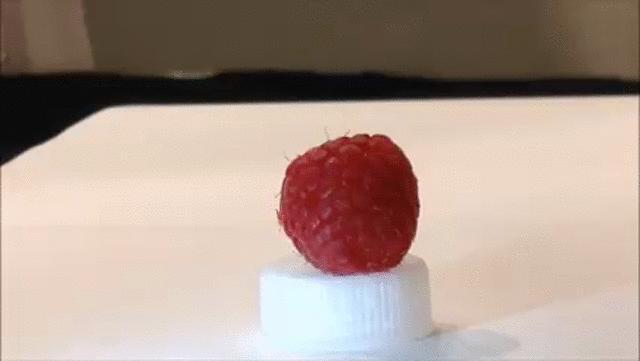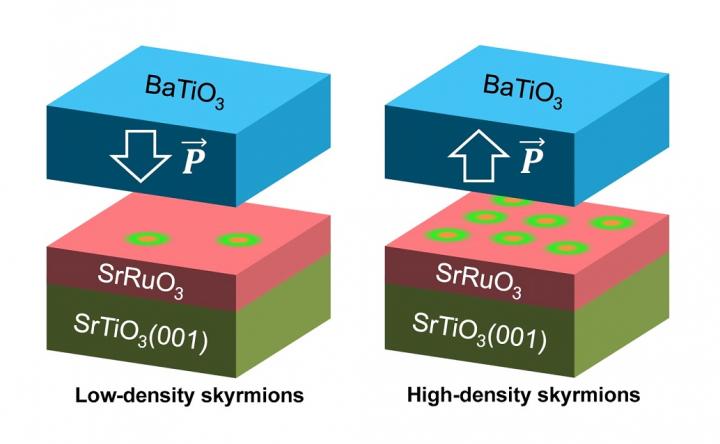
Stanford researchers developed the skin-like sensor on the fingertip of this robotic hand, and programmed it to touch the fruit without damage. One day they hope to create control systems to enable a robot to perceive the characteristics of objects and autonomously calculate how much force to apply.

Gold nanoparticles, which act like "nanolenses," concentrate the energy produced by the extremely short pulse of a femtosecond laser to create a nanoscale incision on the surface of the eye's retina cells. This technology, which preserves cell integrity, can be used to effectively inject drugs or genes into specific areas of the eye, offering new hope to people with glaucoma, retinitis or macular degeneration.

This study measured skyrmions in an ultra-thin material made of a ferromagnetic layer of strontium ruthenate (SrRuO3), overlaid with a ferroelectric layer of barium titanate (BaTiO3) and grown on a strontium titanate (SrTiO3) substrate. BaTiO3 is ferroelectric, meaning that it has a switchable and permanent electric polarization (), while SrRuO3 is ferromagnetic below 160 Kelvin (-113 Celsius). At the BaTiO3/SrRuO3 interface, the BaTiO3 ferroelectric polarization swirls the spins in SrRuO3, generating skyrmions. If the researchers flip the direction of polarization in BaTiO3, the density of the skyrmions changes.